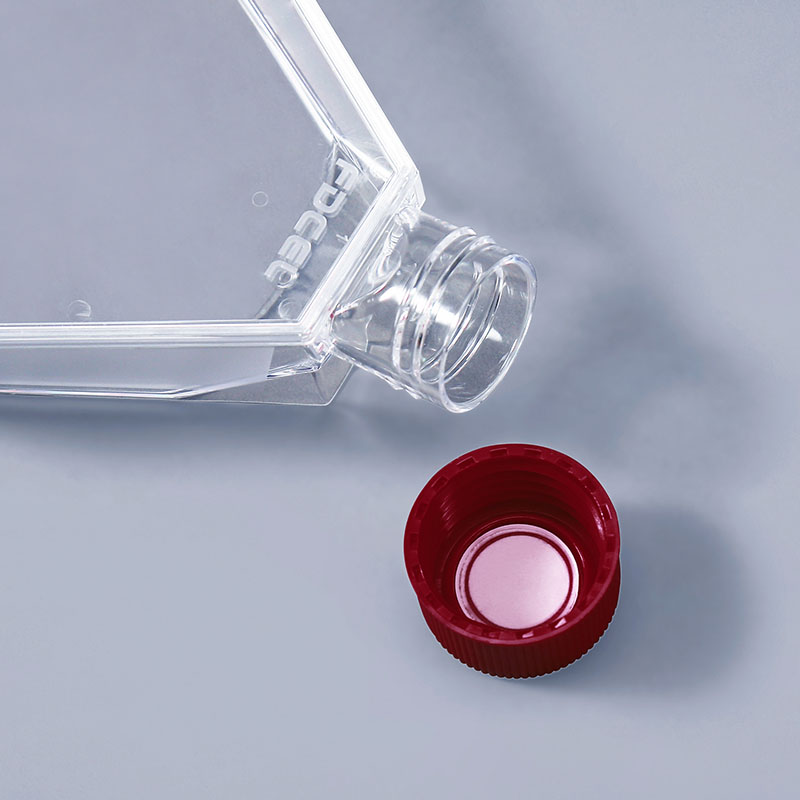Cell culture flasks are containers used for in vitro cell culture, typically made of transparent polymer materials. They are designed with suitable shapes and sizes to provide an appropriate environment for cell growth, allowing cells to proliferate and differentiate outside the body. These cell culture tools are mainly applied in the following fields:
1.Basic Research: Cell culture flasks can be used in various basic research areas such as cell morphology, cell physiology, and cell genetics. By observing the growth status and morphological changes of cells, one can gain in-depth insights into the biological characteristics of cells.
2.Drug Development: They play a crucial role in drug development. By culturing cells treated with drugs in cell culture flasks, one can observe the effects and impacts of drugs on cells, providing an experimental basis for new drug development.

3.Clinical Experiments: They can be used to simulate the human body environment in vitro for various clinical experiments. For example, by simulating the growth process of tumors in cell culture flasks, one can study the occurrence, development, and treatment strategies of tumors.
4.Industrial Production: Cell culture flasks are widely used in industrial production such as vaccine production and bioproduct production. Through large-scale cell culture techniques, batch production of products can be achieved.
Cell culture flasks, as an important tool for in vitro cell culture, play an irreplaceable role in biomedical research. They provide a suitable environment for cell growth, offering strong support for scientific research and technological development. With the continuous advancement of technology, the application fields of these cell culture tools will continue to expand, bringing more innovation and development to biomedical research.
The FAI climbed 5.9 percent year-on-year in the first 11 months of 2018, quickening from the 5.7-percent growth in Jan-Oct, the National Bureau of Statistics (NBS) said Friday in an online statement.
The key indicator of investment, dubbed a major growth driver, hit the bottom in August and has since started to rebound steadily.
In the face of emerging economic challenges home and abroad, China has stepped up efforts to stabilize investment, in particular rolling out measures to motivate private investors and channel funds into infrastructure.
Friday's data showed private investment, accounting for more than 60 percent of the total FAI, expanded by a brisk 8.7 percent.
NBS spokesperson Mao Shengyong said funds into weak economic links registered rapid increases as investment in environmental protection and agriculture jumped 42 percent and 12.5 percent respectively, much faster than the average.
In breakdown, investment in high-tech and equipment manufacturing remained vigorous with 16.1-percent and 11.6-percent increases respectively in the first 11 months. Infrastructure investment gained 3.7 percent, staying flat. Investment in property development rose 9.7 percent, also unchanged.
 English
English


















































